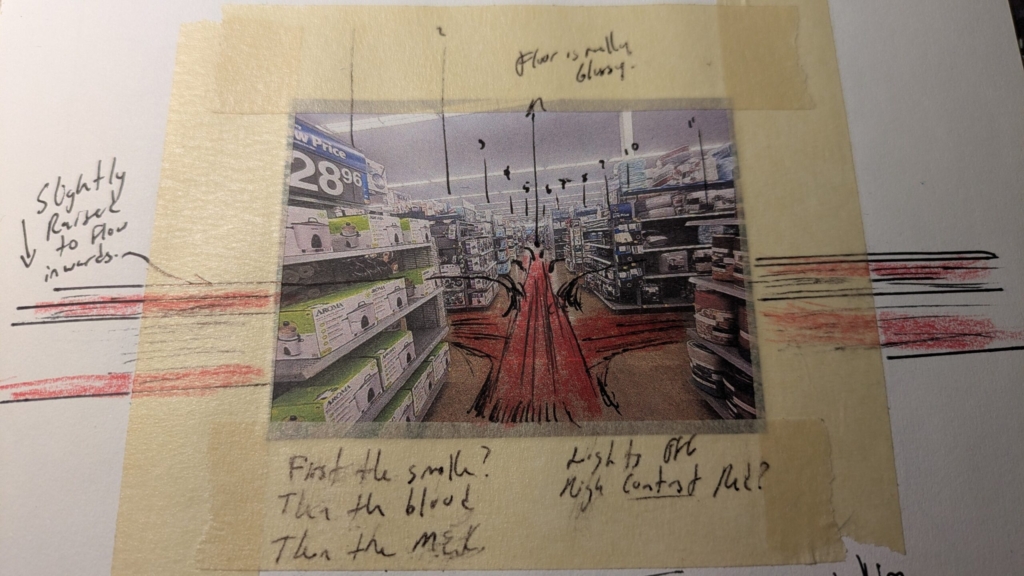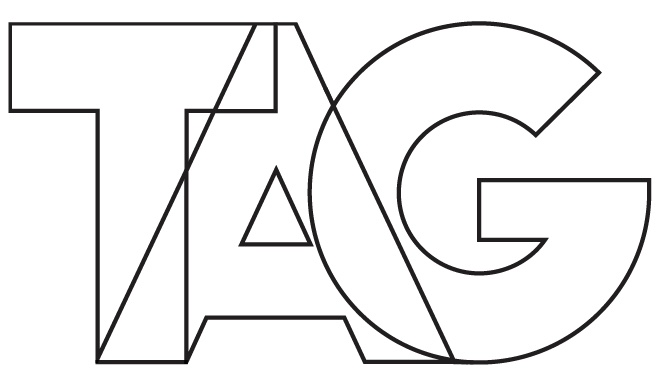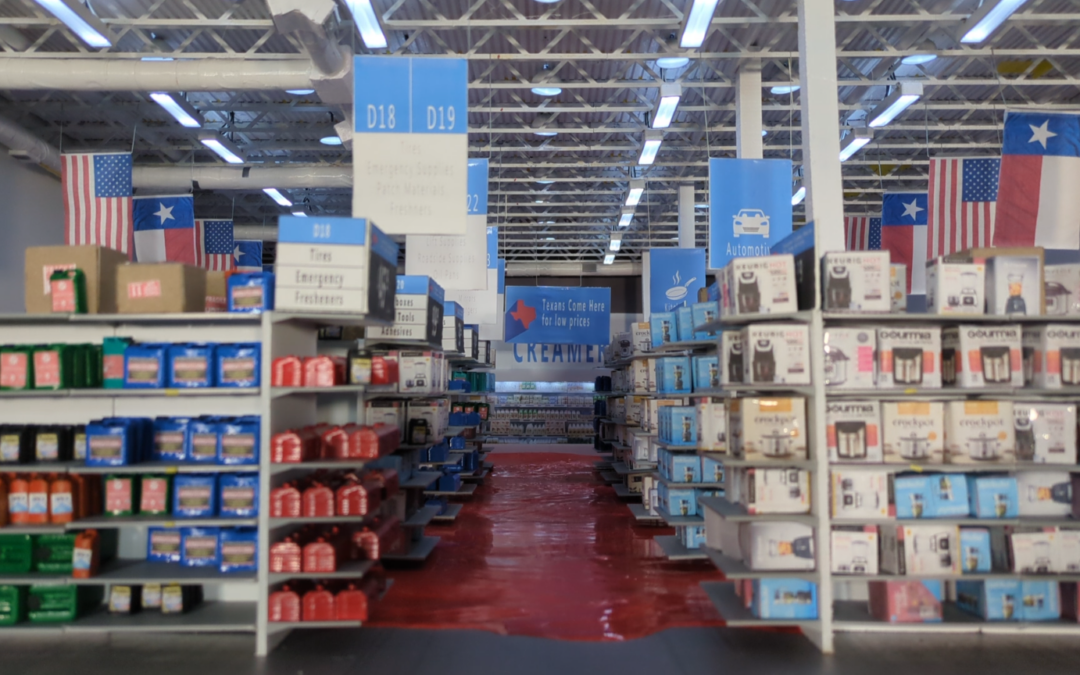Written by Soleil Parks, TAG Gallery Assistant
Responding to the ongoing epidemic of gun violence in the United States, American Roulette is a collective of artists creating space for public reflection through collaborative exhibitions rooted in local communities. What began as a solo exhibition of Chicago-based artist Dominic Sansone’s sculpture series The Gun Show (2015) evolved into a collaborative effort that now features seven artists from across the country. In recent exhibitions, the American Roulette collective has invited local artists to exhibit works alongside those of its core members, asking them to respond to urgent issues such as mass shootings, police brutality, and institutional violence. By pairing national and community voices, the collective hopes to foster dialogue that bridges cultural and societal divides. With this exhibition of American Roulette: Navigating Gun Culture in our Violent Society at Austin Community College, the collective makes its first appearance in Texas, continuing its mission to investigate the ways in which violence infiltrates American life.

Still from Yousif Del Valle’s Home (2023), captured during the final shoot
One of the members of the American Roulette is Yousif Del Valle, ACC Associate Professor in Studio Art, who joined the collective in 2021. In response to a mass shooting that occurred in his hometown of El Paso, Del Valle created Home (2024), a video installation that features a 3D model (1:16 scale) of a Walmart, which represents the site where the attack occurred. In 2019, a 21-year-old man opened fire on shoppers, killing 20 and leaving two dozen others injured (Tribune). Reports cite that the attack was racially motivated, targeting the Latino population that makes up 81.3% of the city’s inhabitants (Census). On the day of the shooting, Del Valle was alerted that he was in the vicinity of the attack with his wife and newborn baby. Reflecting on the experience, Del Valle has shared that this shooting affected him in a way others hadn’t: “after years of mass shootings and desensitization and numbness to a monthly new attack, it finally hit home.”

Del Valle’s initial sketches mapping out lighting, layout, and fluid movement.
In Home, the El Paso Walmart slowly floods with smoke and a blood-like liquid over the course of 53 minutes and 27 seconds. The project began with what he calls the “Ideation Phase,” where he decided how much of the store to recreate and how the liquid would move through the space. Ultimately, he decided to build a model of only a few store aisles to keep the scale manageable while still capturing the feeling of being in a big-box store. The set was built using foam, wood, paper, and PLA filament that combines hand-built and 3D-printed elements. Building the ceiling was especially challenging as it had to allow for fluid to flow through it; for this area of the model he used foam instead of cardboard and added details like hanging vents, signs, lighting and ducts to mimic a real Walmart store. Then came the time-consuming task of creating hundreds of tiny props: boxes, bottles, and labels, each by hand. Finally, he rigged a system of PVC pipes and valves to release smoke and liquid, all timed and positioned so it would look like the store was slowly flooding from within. The last step was carefully lighting and filming the finished set to capture its transformation.

Miniature shelving and product replicas built from foam, paper, and PLA filament

Del Valle’s set up of lighting, pipes, and valves designed to flood the miniature Walmart set during the filming of Home
Home is part of a larger project in which Del Valle recreates sites of mass shootings in miniature format and videos their destruction. In the first half of 2023, TAG hosted Material Evolution: Selected Work from the Texas Sculpture Group, where Del Valle showed his work Aurora Spread (2022), which recreates the movie theater in which 12 people were shot and killed in 2012 in Aurora, Colorado (ABC News). While visiting Material Evolution, Maximillian Stallings, an ACC student in Digital Composition, was emotionally struck by Del Valle’s work. Wanting to collaborate creatively by composing music for one of Del Valle’s video works, Stallings reached out to Del Valle, who invited him to work on a piece related to the Walmart-based project that would become Home. Stallings’ reaction was that “Walmart already has a very foreign feel [to me]. I never go there, I hate going there, so writing music for a piece that takes place in a Walmart sounded interesting.”
When composing music, Stallings says he usually begins with a week of processing and conceptual exploration, which he considers essential to producing a strong piece of work. However, for the Home project, Stallings took three months to consider the sound and environment he wanted to create. He landed on an ambient composition with little music theory, “When people listen to this kind of music they’re not listening for the amazing melody or chord progression. They want to be in that world, or their own world.” To achieve his goal, Stallings utilized Ableton Live 12 software to compose the piece using sample CDs from the early 2000s, including Zero Gravity: Ghost In The Machine. “It’s probably my favorite sample CD. It has so many unique sounds, and the Silent Hill composer [Akira Yamaoka] used it, which makes it even better.” Maximilian says he is often inspired by sounds utilized by game composers.Another example in Home is a sample found in The Legend of Zelda: Majora’s Mask, “I hope at least one person can hear that and feel more connected to the song.”
The dramatic visual changes of Home played an important role in Maximilian’s process. Without them, he said, the piece would have turned out completely different, and probably much shorter. He timed certain changes in the music to align with what was happening in the video, aiming to create something that felt immersive, like watching a movie. Stallings approached composing music for a piece like Home by thinking about the emotions he felt from both Del Valle’s artwork and the tragic event it responds to. He says that what guided him was a deep sense of sadness about the violence that keeps repeating in our world. “Humans as a species are very violent,” he said. “We kill each other every day. For greed, selfishness, our own self-gain, it’s sad.” Stallings aimed to let that emotional weight come through in the sound, and to reflect the way art can connect us, even in the face of such a heavy issue.
Maximilian loves writing jazz, rock, hip-hop, electronica, break-beat, metal, and drum and bass, to name a few. He is also developing a point-and-click horror game called Monarch;Vertigo, which is currently available to play and can be downloaded here. More information about Maximillian and his work can be found at his website, maximilianvalentino.com.
Home will be featured in American Roulette: Navigating Gun Culture in our Violent Society from February 25, 2025 to Jun 26, 2025 in TAG’s Gallery 4000.


Recent Comments